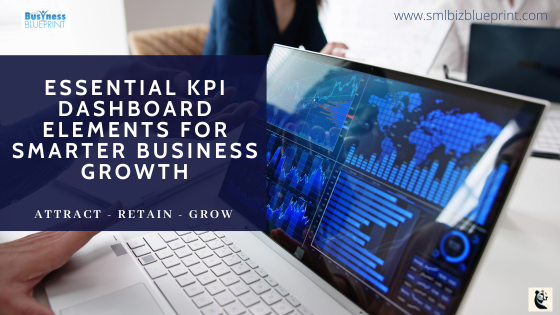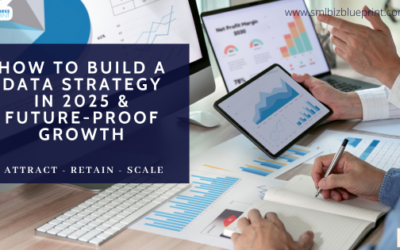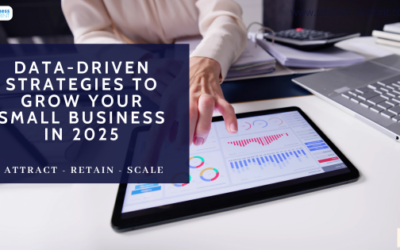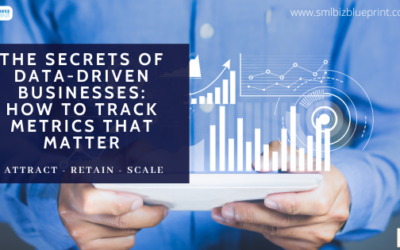Today’s businesses are flooded with information, yet many struggle to translate that data into actionable insights. This is where a KPI dashboard becomes indispensable.
A well-constructed KPI dashboard provides a clear, real-time view of your business’s most important metrics, helping you make informed decisions that drive growth.
According to a Deloitte study, 49% of high-performing companies regularly track their key performance indicators (KPIs) to guide decision-making, improve team alignment, and boost productivity.
But what are the essential elements that make a KPI dashboard effective?
In this post, we’ll walk through the critical components every business owner should include in their KPI dashboard to ensure optimal performance.
From selecting the right KPIs to using AI-powered predictive analytics, this guide will show you how to build a dashboard that turns data into meaningful insights, improves collaboration, and sets your business on the path to sustained success.
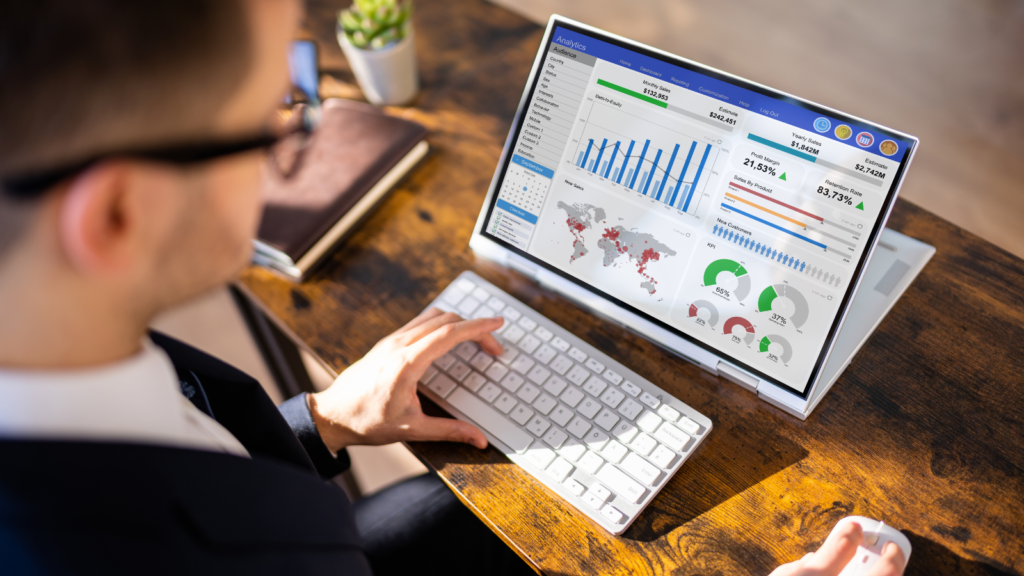
#1 Why Choosing the Right KPIs is Crucial for Success
Selecting the right KPIs (Key Performance Indicators) is the foundation of an effective KPI dashboard. Not all metrics are created equal, and tracking too many, or the wrong KPIs can lead to information overload and confusion.
Instead, your chosen KPIs should directly align with your business objectives and provide actionable insights that help drive your strategy forward.
Align KPIs with Core Business Goals
Before you build your dashboard, it’s essential to clearly define your business’s most important goals. Whether you aim for sales growth, improving customer satisfaction, or optimising operational efficiency, each KPI should be a measurable indicator of success for those objectives.
For example, a marketing department might focus on conversion rates or customer acquisition costs, while a finance team may be more concerned with profit margins and cash flow.
Focus on a Select Few Key Metrics
Tracking every metric available is tempting, but an overloaded dashboard can obscure the most important information. Instead, focus on 5-7 core KPIs that give a high-level overview of your business performance.
These KPIs should provide quick insights into how close you are to achieving your targets and help identify areas for improvement.
Use SMART KPIs
To ensure the KPIs you select are actionable, they should follow the SMART criteria:
- Specific: Focus on a clear, well-defined goal.
- Measurable: Ensure it can be tracked and quantified.
- Achievable: Set realistic targets within your control.
- Relevant: Align with broader business objectives.
- Time-bound: Establish a timeframe to track progress.
By using SMART KPIs, you ensure that the metrics you track are relevant and lead to actionable outcomes.
For example, instead of tracking “sales,” you might set a KPI for “increasing sales revenue by 10% in Q3,” which provides a clear target and timeframe.
Tailor KPIs by Department
Different departments will need different KPIs to track their success. For instance, a sales team might focus on KPIs like lead conversion rate and average deal size. In contrast, a customer support team might track average resolution time and customer satisfaction scores.
Tailoring KPIs to specific departments ensures that each team is focused on the metrics that matter most to their role in achieving overall business success.
According to Geckoboard, 50% of businesses admit that they don’t use KPIs effectively, either because they track too many metrics or focus on the wrong ones. Selecting a few core KPIs aligned with your business goals ensures your dashboard delivers the insights needed to drive success.
#2 The Importance of Real-Time Data for Smarter Decision-Making
In today’s fast-paced business environment, making decisions based on outdated or static data can hinder growth and cause missed opportunities. That’s why having access to real-time data through your KPI dashboard is essential.
Real-time insights provide an accurate, up-to-the-minute snapshot of your business performance, allowing you to adjust strategies quickly and stay ahead of market changes.
Make Proactive Decisions, Not Reactive Ones
With real-time data, you can make proactive decisions rather than reacting to problems after they have already impacted your business. For example, a dip in sales or an increase in customer churn can be addressed immediately if you catch it in real-time.
Instead of waiting for a monthly or quarterly report, a KPI dashboard equipped with live data allows you to spot issues as they arise and respond before they escalate.
Boost Agility and Responsiveness
In fast-moving industries like retail, e-commerce, and tech, the ability to respond quickly to changes can be the difference between hitting your targets or falling behind. Real-time data empowers businesses to pivot swiftly in response to emerging trends or challenges.
For example, an e-commerce company can use real-time data to adjust pricing strategies during a high-traffic period like Black Friday, ensuring they maximise revenue.
Improve Team Performance with Instant Feedback
Real-time data benefits leadership and helps teams improve their performance. Sales teams can track their progress towards monthly targets in real-time, enabling them to adjust their approach or seek additional support if they see they’re falling behind.
Similarly, a marketing team can monitor campaign performance as it unfolds, making tweaks to optimise ad spend or engagement without waiting until the campaign ends.
Use Real-Time Data to Improve Customer Experience
Real-time data can also be a powerful tool for improving the customer experience. For instance, customer service teams can monitor live customer feedback and adjust their responses on the fly.
If a customer satisfaction score dips or negative feedback spikes, immediate action can be taken to rectify the issue. In today’s market, customers expect quick responses, and real-time data equips your business to meet those expectations.
A Forrester study found that businesses using real-time data are five times more likely to make timely decisions and 33% more likely to outperform competitors who rely on static or outdated data.
#3 Visual Clarity: Making Your Data Easy to Understand
One of the most potent benefits of a KPI dashboard is its ability to transform complex data into easily digestible visualisations. Raw numbers and data points can be overwhelming, but they provide immediate insights when presented through clear, intuitive visuals.
Ensuring visual clarity in your dashboard is crucial for helping your team make faster, smarter decisions based on the data at hand.
Simplify Complex Data with Graphs and Charts
Not all data is easy to interpret in its raw form. Visual elements like bar charts, line graphs, and pie charts help us understand trends, track progress, and identify areas that need attention.
For example, a line graph can effectively display month-over-month sales growth, while a pie chart can show sales distribution across different product categories.
Using these visual tools lets your team grasp important metrics at a glance, saving time and enabling quicker responses to performance shifts.
Use Colour-Coded Indicators for Instant Insights
Colour-coded indicators are essential for improving visual clarity in your KPI dashboard. A well-designed dashboard can use colour to signal performance levels—green for metrics on target, yellow for metrics needing attention, and red for underperforming metrics.
This provides an instant visual cue, allowing your team to immediately see which areas are excelling and which need intervention.
For instance, a sales manager could quickly scan the dashboard and identify that lead conversion rates are in the red, prompting a deeper dive into the issue.
Avoid Clutter for Maximum Clarity
While displaying every metric is tempting, too much information on a single dashboard can cause visual clutter, making it harder to extract meaningful insights. Focus on the most important KPIs and use clean, simple visuals that don’t overwhelm the user.
Less is often more when it comes to effective data visualisation.
If you have different teams or departments, consider splitting KPIs into multiple views or dashboards. For example, marketing may focus on website traffic and campaign performance, while operations may need a dashboard that tracks inventory and logistics.
Tailoring the visuals to each department’s needs ensures clarity and focus.
Tailor Visuals to Your Audience
Different audiences within your business may require different types of visuals. Executive teams may prefer high-level, summary visualisations that provide a quick overview of department performance, while department managers might need more detailed, drill-down visualisations that track specific KPIs.
Customising the visuals based on your audience ensures that everyone gets the data they need in the format that best suits their decision-making process.
Example:
A KPI dashboard tracking monthly revenue might use a bar graph to show revenue growth over time. Each bar is colour-coded to indicate whether targets were met (green), nearly met (yellow), or missed (red). This gives leadership a clear visual summary without needing to sift through raw numbers.
Research from QuickSprout shows that visual content is 40 times more likely to be shared on social media and that people remember 65% of information when presented visually, compared to just 10% through text.
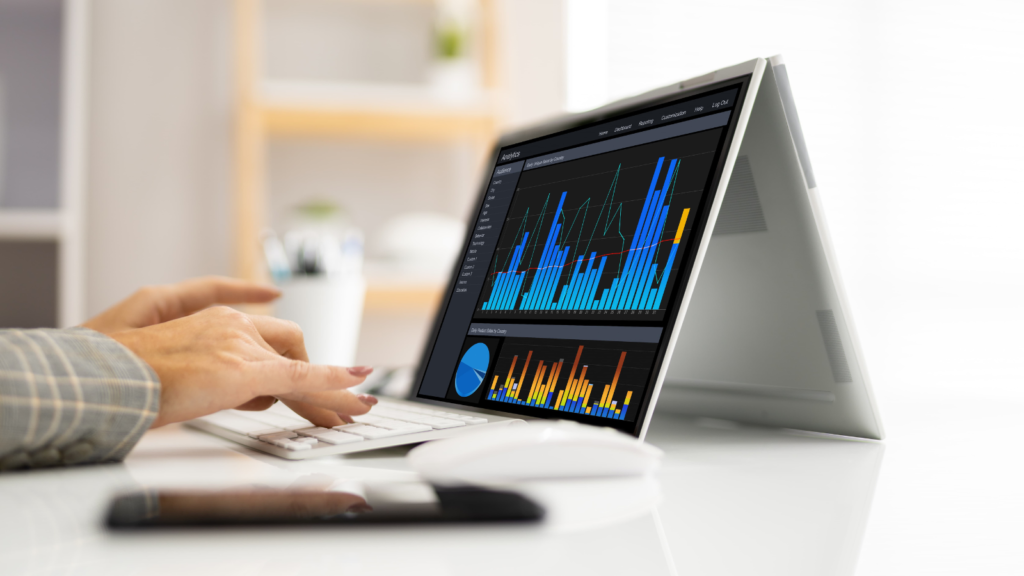
#4 Setting Benchmarks and Targets for Continuous Improvement
A KPI dashboard isn’t just a tool for tracking performance—it’s also essential for driving continuous improvement. Setting benchmarks and targets for your key metrics helps ensure your business stays on track and strives for better results.
Without clear targets, it’s difficult to gauge whether your business is making progress or falling behind.
Establish Clear Benchmarks Based on Historical Data
Benchmarks provide a reference point for evaluating your performance. They can be based on historical data, industry standards, or previous results. By using benchmarks, you can determine whether your performance is improving or if adjustments are needed.
For instance, if your customer satisfaction score benchmark is set at 85% based on past data and drops to 75%, your dashboard will highlight this drop, prompting immediate action.
Benchmarks help businesses maintain a standard while identifying opportunities for growth and optimisation.
Set SMART Targets for Each KPI
Your KPI dashboard should include SMART targets (Specific, Measurable, Achievable, Relevant, and Time-bound) in addition to benchmarks.
These targets give you a clear goal to aim for, motivating teams to perform better and helping measure success over time.
For example, if your sales team aims to increase conversions by 10% in the next quarter, this specific target can be tracked in real time on your dashboard. With regular updates, the dashboard helps assess how close the team is to achieving that goal and whether any adjustments are needed.
Track Progress and Make Adjustments as Needed
Once benchmarks and targets are set, your KPI dashboard becomes a powerful tool for tracking progress toward those goals.
Regularly monitoring your progress allows you to make data-driven adjustments and corrections if your performance falls short. For example, if you’re not meeting your revenue targets, you can analyse related KPIs—like lead generation or average deal size—to identify improvement areas.
By consistently reviewing your targets and making small adjustments, you can ensure your business always strives for improvement and optimised performance.
Celebrate Milestones and Wins
Dashboards aren’t just about spotting problems—they also allow you to track and celebrate successes. Highlighting hitting or exceeding your targets on the dashboard provides positive reinforcement for your team’s efforts.
This can boost morale and motivate everyone to perform at a high level.
For instance, if your marketing team exceeds its goal of generating 1,000 leads, the dashboard can showcase this achievement, encouraging the team to aim even higher in the next cycle.
Example:
An e-commerce business might set a benchmark for monthly website traffic based on previous months’ performance (e.g., 50,000 visitors). The target for the upcoming month could be a 10% increase, aiming for 55,000 visitors. The dashboard tracks this target in real time, providing insights on traffic sources and any mid-month adjustments needed to hit the goal.
According to ClearPoint Strategy, companies that regularly track and adjust their KPIs are 50% more likely to achieve their goals than those that don’t have set benchmarks and targets.
#5 Integrating AI and Predictive Analytics for Future Planning
A well-designed KPI dashboard does more than track past and present performance; it can also help you anticipate the future. By integrating AI (Artificial Intelligence) and predictive analytics into your dashboard, you can uncover trends, forecast outcomes, and make smarter decisions.
These technologies enable businesses to move from reactive management to proactive strategy, where decisions are based on data-backed predictions rather than guesses.
Forecast Trends Based on Historical Data
Predictive analytics leverages historical data to identify patterns and trends that can help forecast future outcomes. AI can predict future sales, customer behaviour, and potential risks by analysing past performance.
This allows businesses to make informed decisions, such as planning for seasonal demand, predicting cash flow, or preparing for shifts in customer preferences.
For example, an e-commerce company might use AI-powered insights to predict a spike in product demand during the holiday season. This allows them to optimise inventory levels and marketing campaigns well in advance.
Identify Opportunities and Risks Early
With AI integration, a KPI dashboard can identify opportunities for growth and highlight risks before they become problems. For example, AI can flag declining trends in customer satisfaction, allowing you to address issues before they affect retention.
It can also identify new opportunities, such as emerging markets or customer segments showing increased engagement, enabling you to adjust strategies quickly.
By leveraging predictive analytics, businesses can take action early, improving their ability to capitalise on positive trends and mitigate potential setbacks.
Improve Efficiency and Save Time
AI-enhanced dashboards offer predictive insights and help automate repetitive tasks like data analysis and reporting. Instead of manually sifting through reports and spreadsheets, AI can compile and interpret the data for you, presenting key insights directly on your dashboard.
This saves time for decision-makers and allows them to focus on strategic initiatives rather than data gathering.
For instance, AI might automatically adjust marketing spending based on real-time performance data, allocating more resources to high-performing campaigns while reducing resources for underperforming ones.
Use AI for Prescriptive Recommendations
Beyond predictions, AI can also offer prescriptive recommendations, suggesting what actions to take based on the insights.
For example, if sales forecasts indicate that you’re likely to miss your quarterly target, AI could recommend adjusting pricing strategies, launching targeted promotions, or refocusing your sales team’s efforts on higher-converting channels.
This capability enables businesses to make data-driven decisions that are not just informed by current trends but are also tailored to achieving desired outcomes.
Example:
A retail company might use AI to predict that a new product will perform exceptionally well among a specific customer segment. Based on this forecast, the dashboard recommends increasing targeted marketing efforts toward that group, helping to maximise sales potential before the competition catches on.
According to McKinsey, businesses that have integrated AI into their operations have seen profit improvements of up to 10%, with AI-enhanced decision-making being a key driver of that success.

#6 How Dashboards Foster Team Alignment
A well-structured KPI dashboard tracks performance and promotes team collaboration and accountability. Providing a centralised view of key metrics ensures that everyone within the organisation is working toward the same goals.
Transparency in performance metrics enhances communication, aligns efforts across departments, and fosters a sense of shared responsibility.
Promote Transparency Across Teams
When key metrics are available for everyone to see, it eliminates silos within the organisation. A KPI dashboard gives every team, from marketing to sales to operations, a real-time view of the data that impacts their work.
This transparency ensures that all departments understand how their performance affects overall business goals.
For example, marketing can see how their campaigns contribute to lead generation, while the sales team can monitor how quickly leads convert. This shared understanding helps teams work more cohesively toward common objectives.
Align Goals and Create a Shared Focus
A KPI dashboard serves as a single source of truth, aligning different teams around shared business goals. By ensuring that everyone is tracking the same KPIs, businesses can ensure consistency in how goals are interpreted and pursued.
This alignment creates a clear direction for all teams, making it easier to prioritise tasks and resources based on the data.
For instance, if the company’s primary goal is to increase revenue by 15%, the marketing and sales teams can track metrics like lead conversion rates and customer acquisition costs to contribute to that goal.
Drive Accountability and Ownership
With a KPI dashboard, individual teams or departments can be held accountable for their contributions to the overall business. Each team can track its specific KPIs while understanding how their performance impacts the larger company objectives.
This fosters a sense of ownership, as teams can directly see how their efforts are making a difference.
For example, a customer support team might track average response time and customer satisfaction scores. If these KPIs fall short, the team can take immediate action to improve, knowing that these factors impact broader company metrics such as retention rates.
Facilitate Cross-Departmental Collaboration
A KPI dashboard encourages cross-departmental collaboration by making key metrics visible and accessible to all. For instance, if sales and marketing both track lead generation and conversion rates, they can easily collaborate on refining messaging or targeting different customer segments to improve performance.
Similarly, customer support and product development teams can collaborate to address recurring product issues identified through support-related KPIs that affect customer satisfaction.
This collaboration ensures that every department contributes toward shared business goals rather than working in isolation.
Example:
A company might use a KPI dashboard to track sales team performance (e.g., conversion rates) and marketing efforts (e.g., lead generation). The dashboard shows both teams how their metrics intersect, helping them collaborate on revenue-building strategies. If conversion rates are low, marketing can work with sales to adjust lead-nurturing strategies, ensuring both teams work toward the same revenue goals.
According to a Salesforce report, 86% of employees and executives cite a lack of collaboration or ineffective communication as a leading cause of workplace failures. A KPI dashboard can bridge that gap by aligning teams around shared data and goals.
Conclusion
A well-designed KPI dashboard is invaluable for any business looking to drive growth, improve decision-making, and foster team collaboration.
Focusing on the right KPIs, leveraging real-time data, and ensuring visual clarity can transform raw information into actionable insights.
Setting clear benchmarks and targets keeps your business on track for continuous improvement while integrating AI and predictive analytics allows you to plan confidently for the future.
Finally, a KPI dashboard enhances collaboration and accountability, aligning teams around shared goals and promoting transparency.
By incorporating these key elements, your KPI dashboard will provide the clarity and insights needed to make smarter, data-driven decisions that drive your business forward.
Ready to build a powerful KPI dashboard that can elevate your business performance? Start by evaluating your current metrics and identifying key areas for improvement.
FAQs
Q1: What is a KPI dashboard, and why do I need one for my business?
A1: A KPI dashboard is a visual tool that displays your business’s key performance indicators (KPIs) in real-time. It helps track important metrics, provides insights into performance, and aids in decision-making. A KPI dashboard ensures you can monitor your business’s progress, identify trends, and take proactive steps to drive growth.
Q2: How do I choose the right KPIs for my dashboard?
A2: Start by identifying your business objectives. What are the key goals you’re trying to achieve? From there, choose KPIs that are relevant to those goals and provide measurable, actionable insights. Keep it simple by focusing on 5-7 core KPIs critical to your success.
Q3: Why is real-time data important for my KPI dashboard?
A3: Real-time data lets you make quick decisions based on current information. Instead of relying on outdated reports, a real-time dashboard gives you an up-to-date view of your performance, enabling you to react to trends, problems, or opportunities as they arise.
Q4: How do AI and predictive analytics enhance a KPI dashboard?
A4: By integrating AI and predictive analytics into your dashboard, you can forecast trends, anticipate customer behaviour, and identify potential risks or opportunities before they occur. AI provides prescriptive recommendations, helping you take data-driven actions that improve your business outcomes.
Q5: How can a KPI dashboard improve team collaboration and accountability?
A5: A KPI dashboard promotes transparency by making key metrics visible to everyone across departments. This ensures that all teams are aligned around shared goals, fostering collaboration and accountability. It helps teams understand how their contributions impact overall business performance.
Q6: How often should I update my KPI dashboard?
A6: For most businesses, real-time updates are ideal, as they ensure that the data is always fresh and actionable. However, depending on your needs, some KPIs may only require weekly or monthly updates. It’s essential to review and adjust your data sources to ensure your dashboard stays relevant and up-to-date.
Q7: What tools can I use to build a KPI dashboard?
A7: Several KPI dashboard tools are available, depending on your business size and needs. Popular options include Google Data Studio, Tableau, Microsoft Power BI, and Klipfolio. Choose a tool that integrates well with your existing data sources and allows you to customize visuals and reports.
Other Articles
Mastering Marketing Success: How to Evaluate Your Marketing Inputs for Maximum ROI
Why Your Business Needs a KPI Dashboard for Faster Growth
Master Low-Cost Innovation: Transform Your Business Without Breaking the Bank

